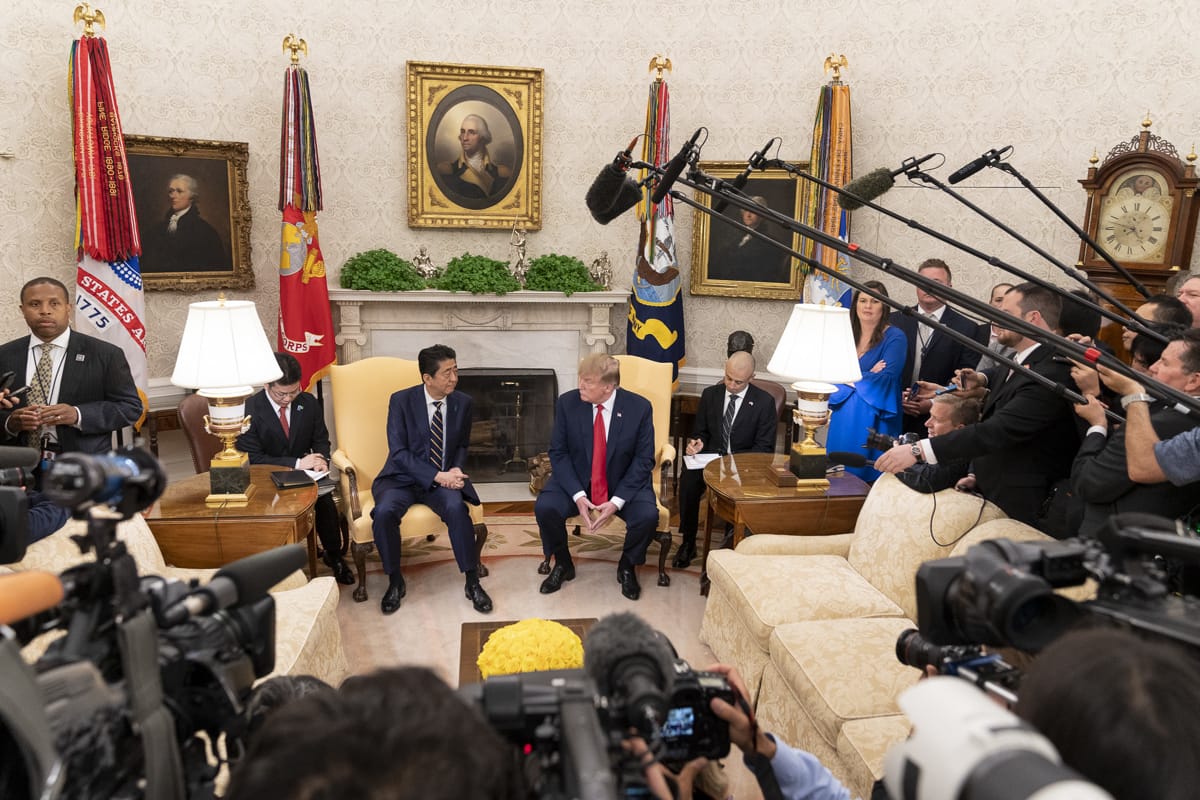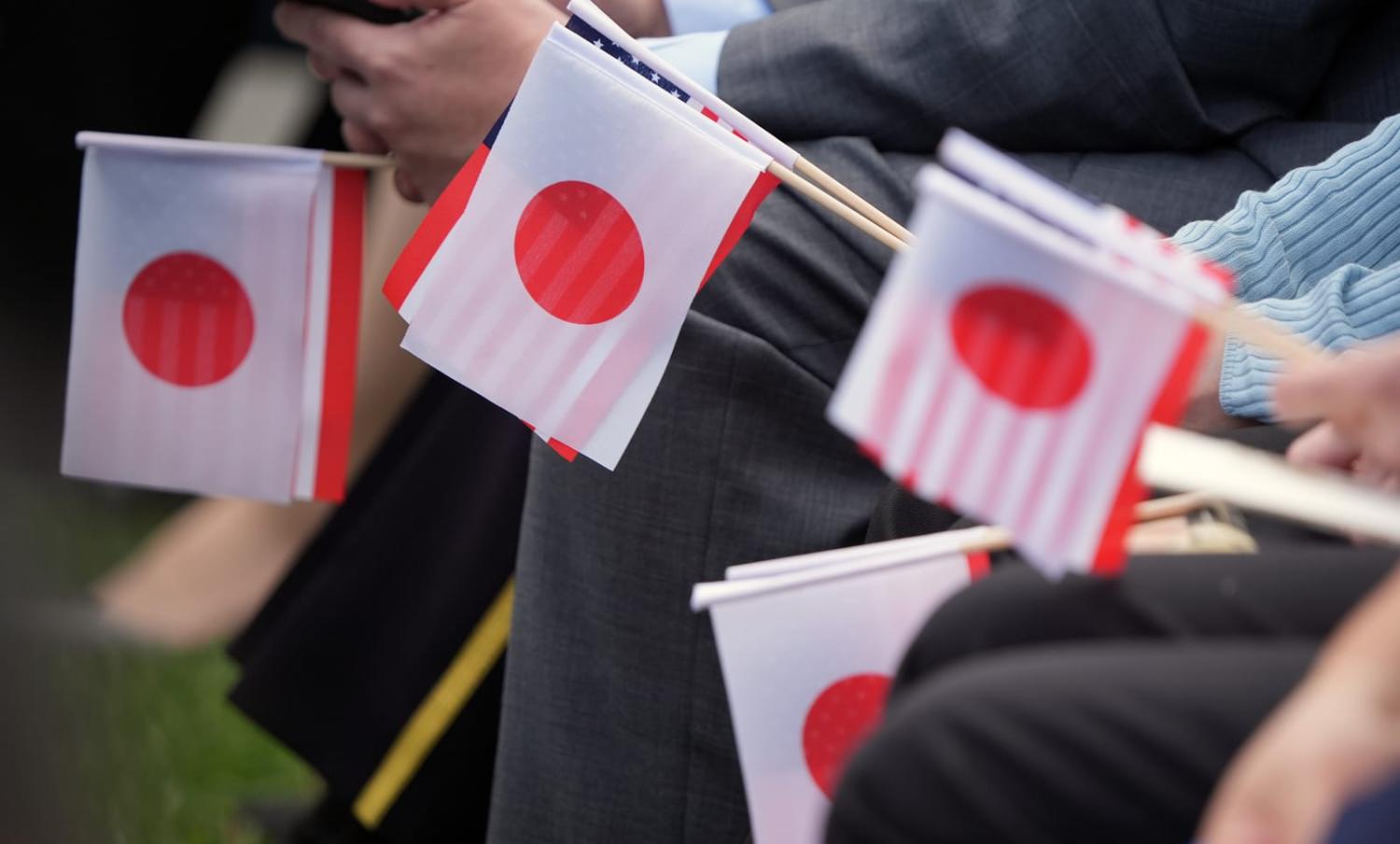Japan, the closest US ally in Asia, was in the crosshairs during Donald Trump’s presidency, despite efforts by the late prime minister Shinzo Abe to cultivate a close relationship with the mercurial US leader. Renowned for questioning their relevance and contributions of allies, in 2019 Trump criticised the US-Japan alliance, stating Japan took advantage of the treaty. Trump is making similar claims about alliance partners failing to spend enough on defence in his bid to reclaim the White House. He also previously accused Japan of manipulating its currency for economic advantage.
Japan is clearly alert to the relationship risk of a second Trump term. In an effort to insulate itself, Tokyo has resorted to both internal and external means – focused at home primarily on modernising military capabilities, while abroad, strengthening the US alliance, expanding military diplomacy and increasing multilateral outreach.
While strengthening the alliance may seem counterintuitive to the effort of insulating Japan from the prevarications of the United States, a stronger alliance increases the costs of not abiding by it. Institutional alliance-strengthening makes it more challenging for individual actors to undermine it based on their ideology or outlook. In April 2024, the two countries outlined what was described as the “biggest upgrade to their security alliance” to counter China. This included enhanced command and control frameworks to facilitate seamless integration, and a focus on interoperability.
Japan’s latest National Security Strategy and its 2023 Defence White Paper set out its future defence expenditure. The government announced a budget of two per cent of its GDP for all “national security-related spending”. By 2027, Japan’s defence budget is expected to be 65 per cent higher than it was in 2022. Japan has also been fortifying its remote islands of Honshu, Kyushu, and Ryuku, among others, while also planning to upgrade its Aegis destroyers by 2027 with the purchase of Tomahawk cruise missiles from the United States.
Strengthening the alliance, therefore, would keep the US engaged in the region.

At the same time, Japan has increased its participation in multilateral and minilateral initiatives. Japan is a driving member of the Quad grouping, involving India, the United States and Australia, and also the new push with the Philippines, which also includes the United States and Australia. Last year, Japan came together with the United States and South Korea to form a new trilateral in northeast Asia amid concern over Chinese and North Korean actions. Japan has also been working to boost logistics cooperation with the United States and Australia that would better facilitate troop movement and weapons and supply deliveries.
Subsequently, it has been reported that the AUKUS members are discussing a defence technology collaboration with Japan. Although this would not include the nuclear submarine project, it seeks to increase multilateral cooperation aimed at deterring China, and further expands Japan’s network of defence relationships. Japan is also one of the Indo-Pacific partners for NATO, the Japanese prime minister attending a NATO summit for the first time in June 2022. These developments aim to strengthen relations with the United States and also to broaden Japan’s engagement with other like-minded nations at a multilateral level.
Military diplomacy has expanded further. India and Japan conducted joint fighter aircraft exercises in Japan’s Ibaraki prefecture for the first time in January 2023, complementing special efforts by Japanese policymakers to strengthen bilateral relations with India. Japan had also conducted its first bilateral air force exercises with Germany a few months earlier, in September 2022.
More importantly, in April last year, Japan established an Official Security Assistance (OSA) framework as a parallel to its Official Development Assistance economic-focused framework, aimed at strengthening security cooperation with partner countries. Under the OSA, Japan will provide equipment and infrastructure development for others to strengthen security capacities. Japan had previously been barred from providing military aid, and, according to one analysis, the OSA will augment Tokyo’s efforts to play a greater role in regional security.
This multi-dimensional approach, therefore, is aimed at insulating Japan from the turbulence of American domestic politics and reducing its dependence on the United States for security amid the continued anxiety about Washington’s commitment to the region. Growing closer to the United States might seem counterintuitive, yet it nonetheless supports Japan’s aim to give the alliance an institutional foundation. At the same time, Japan is strengthening its own capabilities, while expanding ties with other partners.

